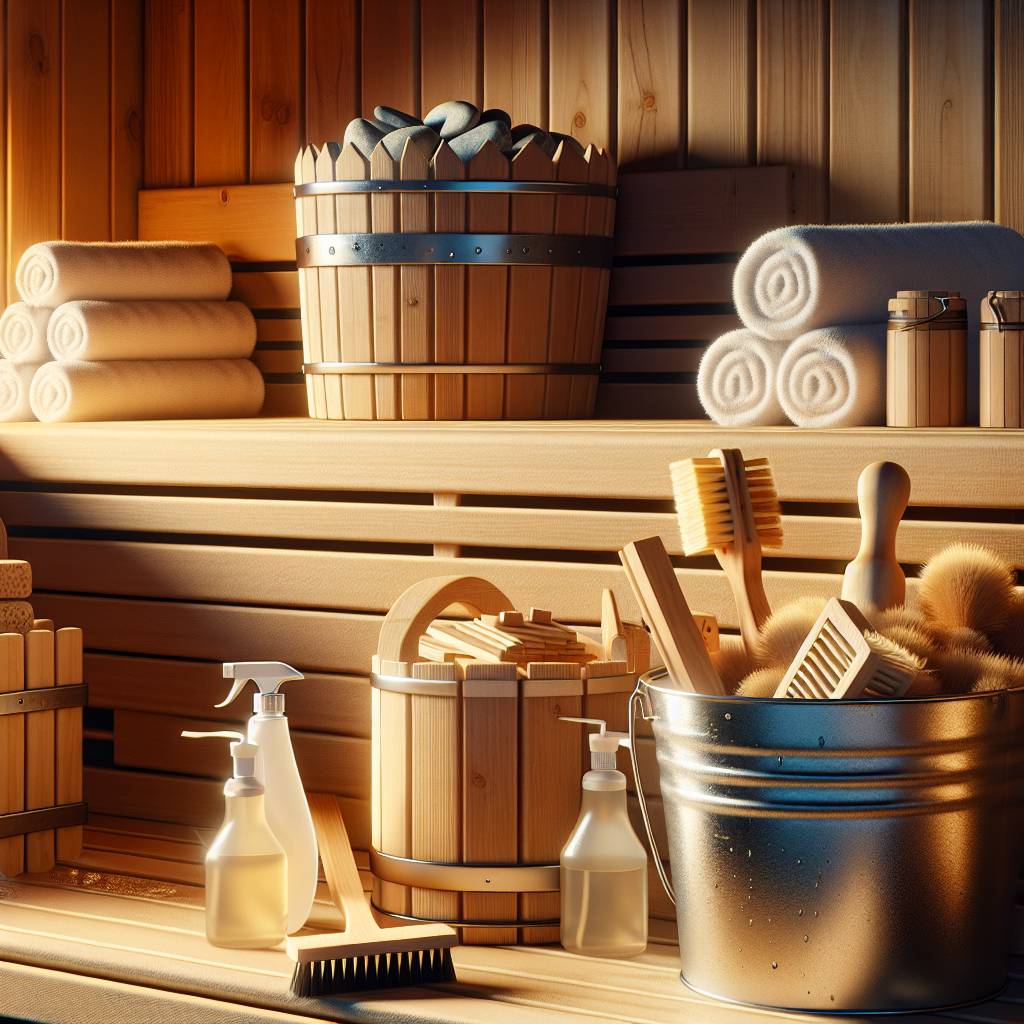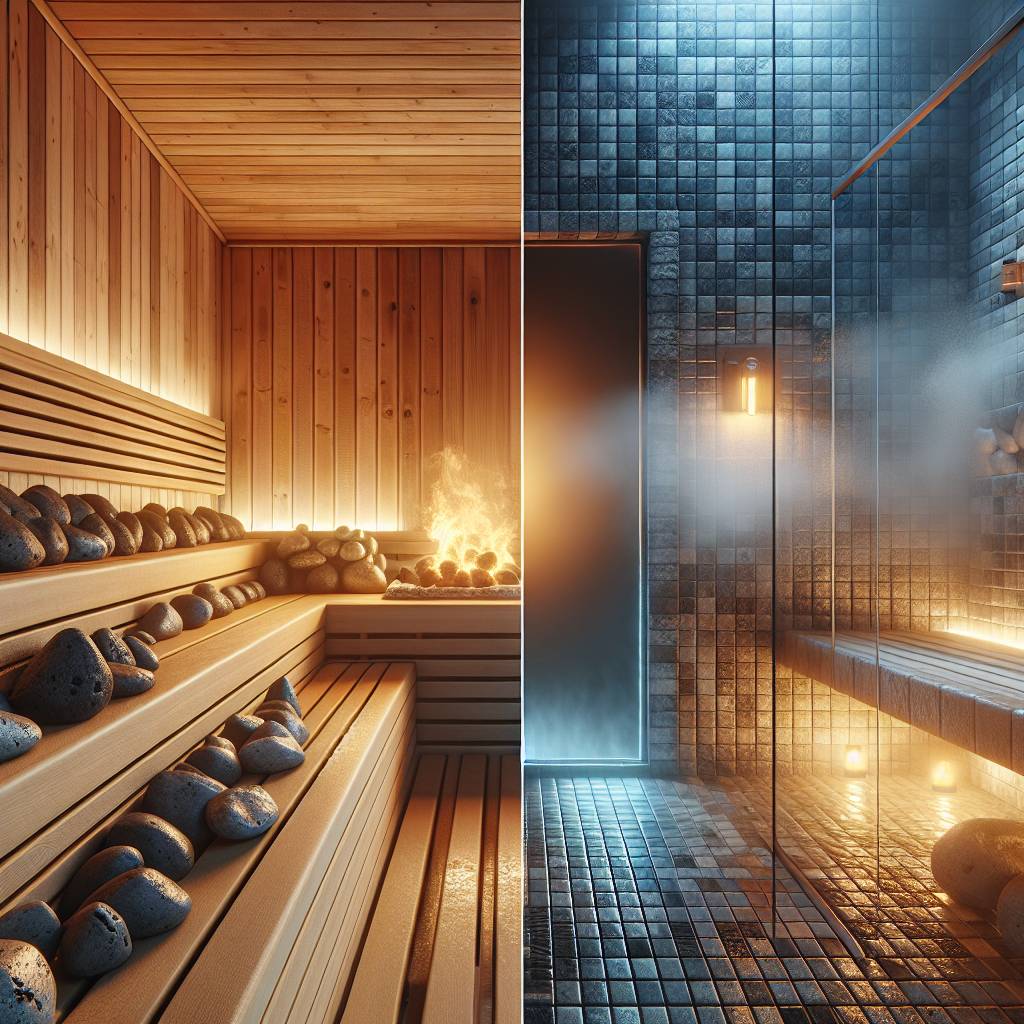Did you know that regular sauna use can lead to a 24% reduction in cardiovascular-related mortality? Keeping your sauna clean is crucial for both hygiene and performance. Establishing daily and weekly cleaning routines will ensure a relaxing and safe sauna experience. Daily maintenance, such as wiping down surfaces and removing debris, prevents bacteria buildup. Weekly deep cleaning involving scrubbing, disinfecting, and checking the sauna’s components maintains its longevity. By following these routines, you not only enhance the lifespan of your sauna but also create a healthier environment for yourself and others. Stay tuned to discover simple yet effective tips for incorporating these practices seamlessly into your routine.
Key Takeaways
- Consistent cleaning is essential to maintain a hygienic sauna environment.
- Implement a daily routine focusing on quick wipe-downs and checks for any immediate issues.
- Incorporate a weekly deep cleaning session to address more thorough cleaning tasks.
- Use gentle cleaning techniques to avoid damaging the sauna surfaces.
- Stock up on necessary cleaning materials like mild soap, brushes, and towels for effective cleaning.
- Prioritize ventilation and moisture control to prevent mold and mildew growth in the sauna environment.
Understanding Your Sauna
Types of Saunas
Traditional saunas utilize heated rocks to produce steam, while infrared saunas use infrared heaters for a milder heat. Users may prefer traditional saunas for intense heat and humidity, whereas infrared saunas offer a more gentle and direct heat experience. Steam saunas are known for their high humidity levels, promoting a deep sweat, while dry saunas provide a more intense and dry heat.
- Traditional saunas:
- Intense heat and humidity
- Utilize heated rocks for steam production
- Infrared saunas:
- Milder heat
- Direct heat from infrared heaters
- Steam saunas:
- High humidity levels
- Deep sweat promotion
Key Components
Sauna setups consist of crucial components such as benches, lighting, and controls for temperature regulation. Heaters play a vital role in maintaining the sauna’s desired temperature. Proper ventilation systems are essential to ensure fresh air circulation and prevent moisture buildup within the sauna.
- Essential elements of a sauna setup:
- Benches, lighting, temperature controls
- Ensure comfort and functionality
- Role of heaters:
- Maintain sauna temperature
- Provide consistent heat distribution
- Importance of ventilation systems:
- Ensure fresh air circulation
- Prevent moisture accumulation
Daily Cleaning Routine
Surface Wipe Down
Daily surface wiping in the sauna is crucial for maintaining cleanliness and hygiene. Removing sweat stains promptly not only keeps the sauna looking fresh but also prevents bacteria buildup. Utilizing natural cleaning products ensures a safer environment for users.
Regularly wiping down surfaces helps prevent the accumulation of dirt and bacteria, promoting a healthier sauna experience. Vinegar and water solutions are effective in tackling sweat stains while being gentle on wooden surfaces. Implementing this practice daily can significantly extend the lifespan of your sauna.
Ventilation Check
Frequent ventilation checks are essential to ensure optimal air quality within the sauna. Proper inspection and cleaning of ventilation areas help prevent mold growth and maintain a fresh atmosphere. Poor ventilation can lead to respiratory issues and discomfort for sauna users.
Inspecting vents for blockages and dust accumulation is vital for maintaining good air circulation. A mixture of water and mild detergent can be used to clean vents effectively. By prioritizing ventilation checks, you create a healthier environment that enhances the overall sauna experience.
Accessory Care
Maintaining sauna accessories such as buckets and ladles is integral to prolonging their lifespan and ensuring user safety. Cleaning these accessories regularly prevents germ buildup and maintains their functionality. Properly storing accessories also contributes to a more organized and enjoyable sauna experience.
Cleaning buckets and ladles with warm soapy water after each use prevents bacterial growth and preserves the wood’s quality. Storing accessories in a dry, well-ventilated area helps prevent mold formation. Well-maintained accessories not only enhance hygiene but also add to the overall ambiance of the sauna.
Weekly Cleaning Routine
Sweeping Floors
Regularly sweeping sauna floors is essential to maintain cleanliness and prevent the buildup of dirt and debris. Avoid using harsh brushes that can scratch or damage the floor surface. Ensuring the sauna floor is free of debris helps create a safe and hygienic environment for users.
Damage Inspection
To ensure the sauna’s structural integrity, users should conduct regular inspections for damages such as cracks or leaks. Neglecting these checks can lead to costly repairs or safety hazards for users. Addressing damages promptly is crucial to prevent further deterioration and maintain a functional sauna.
Deep Clean Steps
A deep sauna cleaning involves thoroughly cleaning all surfaces, benches, and walls using appropriate cleaning agents. Periodic deep cleaning is necessary to eliminate bacteria and germs, ensuring a healthy sauna environment. Deep cleaning also extends the longevity of sauna components by preventing corrosion and wear.
Cleaning Techniques
Wood Care
Wood-friendly cleaning products are essential for maintaining the integrity of sauna wood surfaces. Using harsh chemicals can cause damage and discoloration.
Applying protective coatings to wooden surfaces helps preserve their quality and prevent stains. It creates a barrier against moisture, enhancing durability.
Using harsh chemicals on sauna wood can lead to stains, discoloration, and even deterioration. Opt for gentle, wood-safe cleaners to avoid damage.
Mold Prevention
Preventing mold growth in saunas involves controlling humidity levels and ensuring proper ventilation. Regular cleaning routines are crucial.
Controlling humidity levels is vital in mold prevention as mold thrives in damp environments. Maintain optimal humidity levels to deter mold growth.
Regular cleaning routines, including wiping down surfaces and removing any excess moisture, are effective methods for preventing mold in saunas.
Odor Control
To control odors in saunas, ensure proper ventilation to circulate fresh air and reduce stagnant smells. Use natural deodorizers for a fresh scent.
Ventilation plays a crucial role in managing sauna odors by allowing airflow and preventing musty smells from lingering.
Natural deodorizers such as cedar blocks or eucalyptus oil can effectively eliminate odors in saunas without harsh chemicals.
Required Cleaning Materials
Safe Cleaners
When cleaning saunas, opt for safe and eco-friendly products to maintain a healthy environment. Avoid harsh chemicals that can emit toxic fumes when exposed to heat. Prioritize non-toxic cleaners to ensure user safety and well-being.
Using safe cleaners is crucial as harsh chemicals can pose health risks, especially in a high-temperature environment like saunas. Chemicals with strong odors can cause respiratory irritation and allergic reactions in users. Non-toxic alternatives are gentler on the skin and respiratory system.
Choosing non-toxic cleaners not only safeguards users’ health but also prolongs the lifespan of the sauna. Eco-friendly products help maintain the wood’s integrity and prevent damage caused by harsh chemicals. Prioritizing safety ensures a pleasant and sustainable sauna experience.
Tools for Maintenance
Essential tools for sauna maintenance include a soft-bristled brush, microfiber cloth, and wood cleaner. A soft-bristled brush is ideal for removing dust and debris from benches and walls. A microfiber cloth helps wipe down surfaces without scratching them.
Investing in quality maintenance tools such as a thermometer and a hygrometer is beneficial for monitoring temperature and humidity levels in the sauna. These tools aid in ensuring optimal sauna conditions for users. Quality tools contribute to maintaining a clean and hygienic sauna environment.
Regular use of maintenance tools not only keeps the sauna clean but also enhances its longevity. Proper maintenance prevents mold growth, wood deterioration, and other issues that may arise due to neglect. Quality tools make routine maintenance easier, ensuring a well-kept sauna for years to come.
Sauna Safety Measures
Electrical Checks
Sauna users must regularly inspect the electrical components to ensure safety. Check for loose wires and damaged cords. Be cautious of any burning smells or unusual sounds during sauna operation.
Performing electrical checks can prevent potential hazards like electric shocks and fires. Faulty wiring or malfunctioning components can pose serious risks to sauna users. It is crucial to address any electrical issues promptly.
Professionals should conduct regular electrical inspections to maintain a safe sauna environment. These inspections ensure that all electrical systems are functioning correctly and meet safety standards.
Regular Inspection Protocol
Establish a systematic protocol for routine sauna inspections. Inspect the sauna interior, including benches, walls, and floors, for any signs of wear or damage. Ensure that all sauna accessories are in good condition.
Consistent monitoring of the sauna’s conditions is essential for maintaining a safe and sanitary environment. Regular inspections help identify potential problems early on, preventing costly repairs or replacements.
Early detection through regular inspections can prolong the lifespan of sauna installations and accessories. By addressing issues promptly, sauna owners can ensure a clean and hygienic environment for users.
Ventilation and Moisture Control
Effective Practices
To maintain a clean and functional sauna, establish a regular cleaning routine to prevent mold growth. Adequate ventilation is crucial for air circulation and preventing moisture buildup. Regularly check temperatures to ensure they are optimal for health benefits and equipment longevity.
Implementing effective practices such as wiping down surfaces after each use can help maintain cleanliness. By establishing a routine maintenance schedule, you can prevent the accumulation of dirt and grime, ensuring a hygienic environment for sauna users. These practices not only enhance cleanliness but also contribute to prolonging the sauna’s lifespan.
Humidity Management
Proper humidity levels in saunas are essential for a comfortable experience. High humidity can lead to mold growth and discomfort for users. To manage humidity levels effectively, consider installing a humidity gauge to monitor and adjust moisture levels accordingly.
High humidity not only affects users’ comfort but can also impact the sauna equipment by causing corrosion. To mitigate these effects, it is vital to ventilate the sauna properly and regulate humidity levels. Maintaining optimal humidity levels ensures that sauna users can enjoy the full health benefits without any adverse effects.
FAQs on Sauna Cleaning
Common Questions
Sauna cleaning is essential for maintaining a healthy and hygienic environment. Regular sauna cleaning helps prevent the buildup of bacteria and mold, ensuring a safe experience for users. Using sauna cleaning products specifically designed for this purpose can make the process more effective.
When should you perform cleaning sauna routine? It is recommended to clean your sauna after each use to prevent the accumulation of sweat and dirt. Conducting a sauna maintenance cleaning regimen weekly can help keep your sauna in top condition.
What are some common sauna maintenance issues? One common problem is a malfunctioning heater, which can affect the overall performance of the sauna. To address this, consider using products like Almost Heaven Sauna Heater Cleaner to maintain your heater’s efficiency.
Expert Tips
To optimize your sauna cleaning routine, ensure proper ventilation and moisture control. By allowing fresh air to circulate and managing humidity levels, you can prevent mold growth and maintain a pleasant sauna environment.
For enhanced effectiveness, consider deep cleaning your sauna periodically. This involves scrubbing surfaces with a mild detergent and water solution to remove stubborn stains and grime. Pay special attention to benches, walls, and floors during this process.
Advanced techniques for maintaining a pristine sauna include using natural cleaners like vinegar or baking soda. These eco-friendly options are gentle on surfaces yet effective in removing dirt and bacteria. Incorporating essential oils into your cleaning routine can add a pleasant aroma to your sauna.
Summary
You now have a solid grasp of how to maintain your sauna with daily and weekly cleaning routines. Understanding the proper techniques, materials, and safety measures is crucial for keeping your sauna in top condition. By following these guidelines, you can ensure a clean and safe environment for your relaxation sessions.
Take charge of your sauna maintenance today by implementing the daily and weekly cleaning routines discussed. Your efforts will not only prolong the lifespan of your sauna but also contribute to a healthier and more enjoyable sauna experience. Keep up with the cleaning schedule, use the right materials, and prioritize safety to make the most of your sauna for years to come.
Frequently Asked Questions
How often should I clean my sauna?
It is recommended to clean your sauna daily by wiping down the benches and surfaces. A more thorough cleaning should be done weekly to maintain hygiene and ensure a pleasant sauna experience.
What cleaning materials are safe to use in a sauna?
For daily cleaning, a mild detergent diluted in water is suitable. For weekly deep cleaning, use a non-toxic sauna cleaner or a mixture of vinegar and water. Avoid harsh chemicals that can leave residues or affect the sauna’s wood.
How can I ensure proper ventilation in my sauna?
Proper ventilation is crucial for a safe sauna experience. Ensure your sauna has functional vents and leave the door slightly open after each use to allow air circulation. Installing an exhaust fan can also help regulate humidity levels.
Is it necessary to control moisture levels in the sauna?
Yes, controlling moisture levels is essential to prevent mold growth and maintain a comfortable environment. Use a hygrometer to monitor humidity levels and consider using a dehumidifier if needed. Proper ventilation and regular cleaning also aid in moisture control.
Can I use essential oils for fragrance in my sauna?
Yes, you can enhance your sauna experience by adding a few drops of essential oils to the water used on the sauna rocks. Popular choices include eucalyptus, lavender, and cedarwood. Ensure the oils are pure and safe for use in saunas to avoid any adverse effects.






